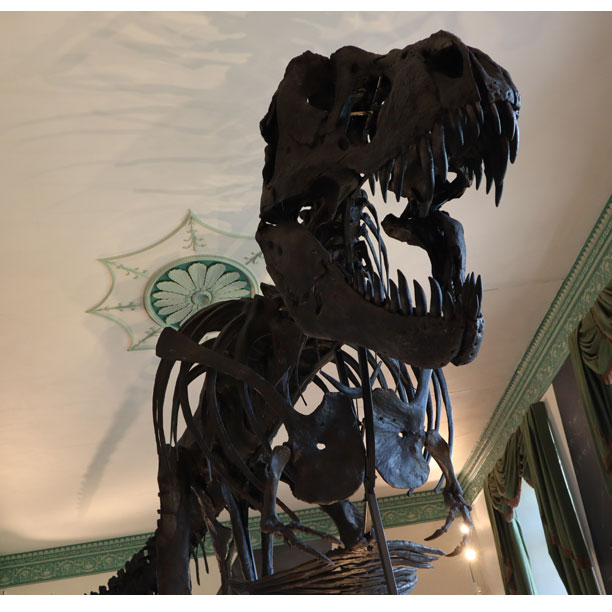Are There Three Tyrannosaurus Species? New Research Asks the Question
So, the scientific paper is out and theropod feathers are about to be ruffled. The iconic Tyrannosaurus rex might not be just one species, but actually three. That is the conclusion reached by researchers Gregory S. Paul, Scott Persons and Jay Van Raalte – all highly respected scientists, but already other academics have challenged their findings.
Writing in the academic journal “Evolutionary Biology”, two new Tyrannosaurus species are proposed, a geologically older, robust form newly named Tyrannosaurus imperator that was followed by two further species the already named Tyrannosaurus rex, also a robust tyrannosaur and a contemporaneous gracile form which has been named Tyrannosaurus regina.
Picture credit: Everything Dinosaur
The Tyrannosaurus Controversy
The fearsome, apex predator Tyrannosaurus rex might be synonymous with the famous Hell Creek Formation, but Tyrannosaurus fossils have also been found in many other Upper Cretaceous deposits (Maastrichtian stage). For example, T. rex fossils or at least indeterminate Tyrannosaurus material is associated with nine other North American geological formations.
T. rex fossils have been found in exposures of the Scollard Formation of south-western Alberta the Frenchman Formation of southern Saskatchewan and south-eastern Alberta. This suggests that this large theropod roamed northern areas of Laramidia. Tyrannosaurus fossils from the Laramie Formation exposures in Colorado have been assigned to Tyrannosaurus rex. T. rex fossil material has been reported from much further south, from the Javelina Formation of Texas.
With only one species of Tyrannosaurus (T. rex), the fossil evidence as classified so far indicates that the “tyrant lizard king” had a huge geographical distribution, virtually the entire ancient landmass of Laramidia.
Furthermore, these deposits represent vast amounts of geological time. The Hell Creek Formation is believed to have been formed over two million years and as scientists have now concluded that other iconic taxa such as Triceratops evolved over this time period into new species, then surely T. rex would have been subject to the same evolutionary pressures.
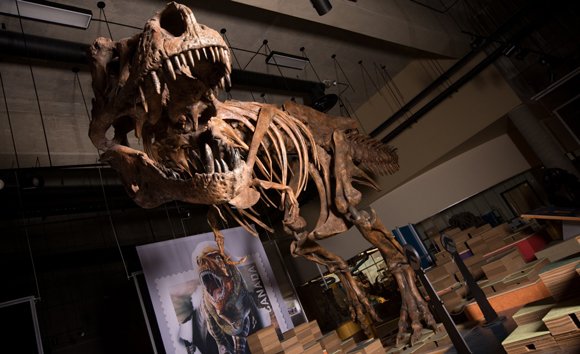
A reconstruction of the skeleton of “Scotty” the T. rex. The fossils come from the Frenchman Formation of Saskatchewan (Canada) and one of the authors of the scientific paper published in the journal the Anatomical Record was Scott Persons who is a co-author of the new paper describing three Tyrannosaurus taxa. Picture credit: Amanda Kelley.
Picture credit: Amanda Kelley.
Analysis of Limb Bones (Femora)
A total of thirty-seven fossil specimens were studied by the researchers. Two-thirds of these had femora (thigh bones) associated with them and the scientists found differences in the thickness and robustness of these bones, that were unlikely a result of individual variation within a single species. In the sample studied, Gregory S. Paul and his colleagues found greater variation in femur robustness in the T. rex thigh bone material than in the whole of the other tyrannosaurid femora material known from the preceding ten million years.
The team discounted size variations based on maturity, ontogeny (growth pattern) and the age of the Tyrannosaurus when it died. Robust forms and more gracile forms of T. rex have been known for some years. Some palaeontologists have speculated that the smaller, more slender bones of some T. rex specimens compared to the more robust femora of other specimens might be explained as differences in the sexes.
If robust forms represent females, and gracile forms males, then it would be expected that the fossil record would show roughly even numbers of these bone types. However, the research team point out an uneven ratio of robust bones to gracile bones and as such they discount the differences as sexual variation.
In addition, the team report that gracile bones are only found in higher layers of sediment. These bones are geologically much younger than other more robust T. rex bones associated with lower layers.
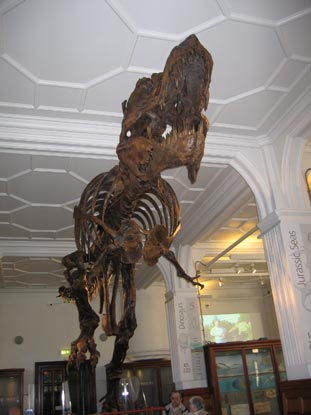
Which Tyrannosaurus species? A cast of the T. rex specimen known as “Stan” (BHI 3033), but researchers propose that there were actually three species of Tyrannosaurus present in the Late Cretaceous of North America. Picture credit: Everything Dinosaur.
Picture credit: Everything Dinosaur
Differences in Tooth Count
The scientists also commented on differences in tooth counts associated with Tyrannosaurus lower jaws (the dentary). Tyrannosaurus imperator (the earliest Tyrannosaurus species) had two small incisors in each dentary. Whilst the later species (T. regina and T. rex) had only one small incisor in each dentary.
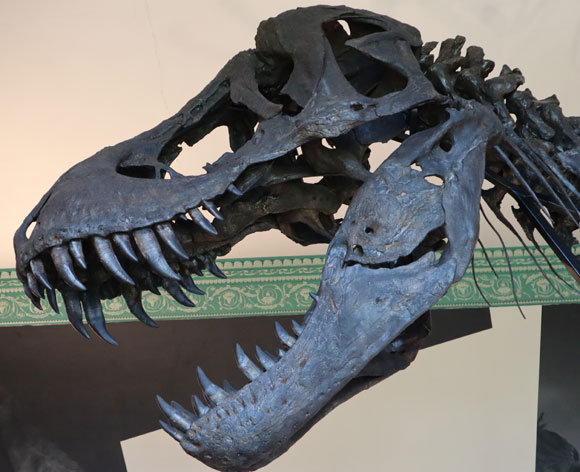
The research team identified differences in the number of small incisor-like teeth in the lower jaw which they concluded was further evidence of the T. rex fossil material actually representing a trio of Tyrannosaurus species. Picture credit: Everything Dinosaur.
Picture credit: Everything Dinosaur
The researchers concede that they cannot rule out other explanations for their findings. Several palaeontologists have challenged the paper, stating that the variations seen in the fossils could be explained by factors such as individual variation amongst individuals of a single species. Like many dinosaurs, Tyrannosaurus rex changed radically as it grew and matured, this aspect of dinosaur taxonomy is going to be debated for a considerable time to come.
For fans of dinosaur models, does this mean that collectors will have to reassess their Tyrannosaurus rex models?
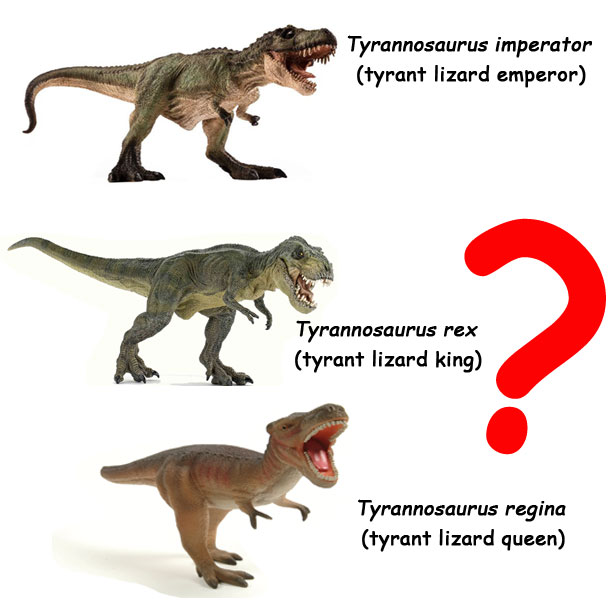
Which Tyrannosaurus species are you? A newly published scientific paper proposes three Tyrannosaurus species. Picture credit: Everything Dinosaur.
Picture credit: Everything Dinosaur
The scientific paper: “The Tyrant Lizard King, Queen and Emperor: Multiple Lines of Morphological and Stratigraphic Evidence Support Subtle Evolution and Probable Speciation Within the North American Genus Tyrannosaurus” by Gregory S. Paul, W. Scott Persons IV and Jay Van Raalte published in Evolutionary Biology.
Visit the award-winning Everything Dinosaur website: Everything Dinosaur.


